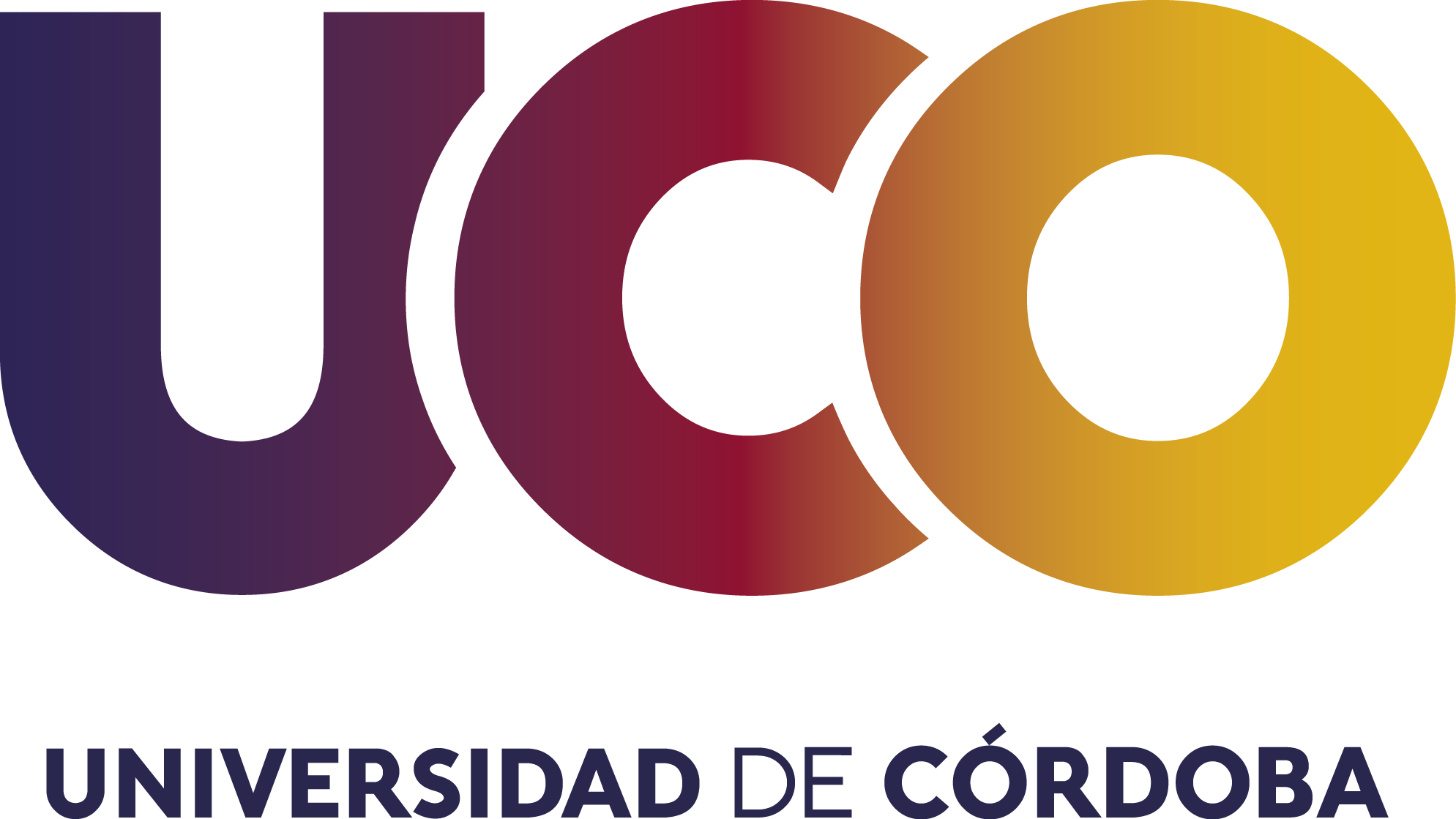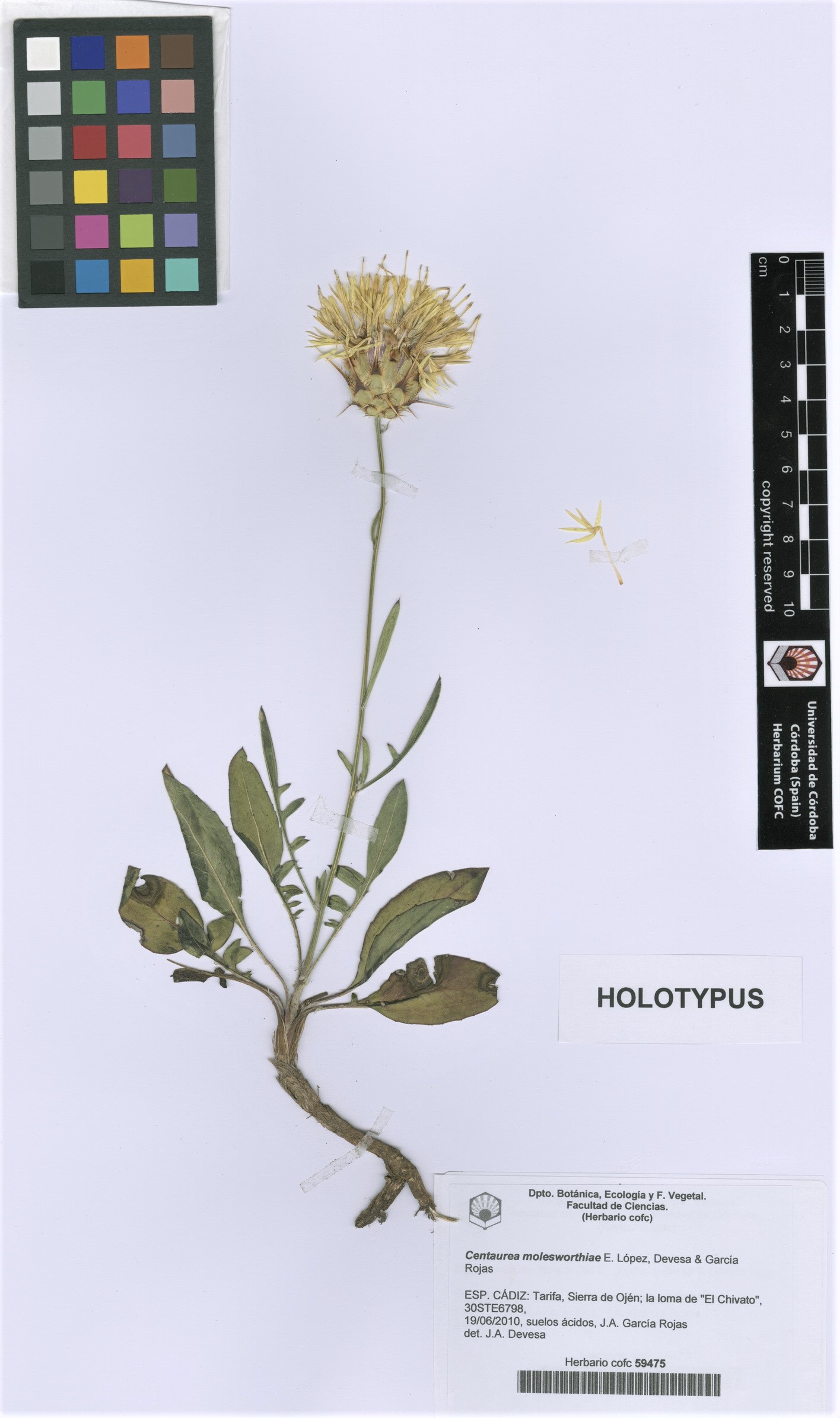The Herbarium of the Faculty of Sciences of the University of Córdoba (COFC), located on the Rabanales Campus, basement of building C-4, was created in 1977 and houses two collections of vascular plants and one of fungi.
One of the collections of vascular plants, the Historic Herbarium, has its origin in the collections made by the Cordoban friar José de Jesús Muñoz Capilla (1771-1840) and the apothecary Rafael León y Gálvez (1772-1811), although as stated in the printed cover of the same, many plants were also collected by Rafael León, Antonio Cabrera and by the famous Mariano Lagasca. It consists of 1,616 sheets, mostly from the province of Córdoba, which were inventoried and preserved from destruction in the Faculty of Veterinary Medicine of Córdoba until their transfer to their current location in the Herbarium of the Department of Botany, Ecology and Plant Biology of the Faculty of Sciences of Córdoba.
The Mushroom Herbarium and the General Herbarium contain the material that has been collected during the last 30 years, mostly the result of explorations carried out by members of the Department, mainly at the provincial and regional level, and to a lesser extent in other areas of the Iberian Peninsula and in northwest Africa. There is also foreign material obtained by exchange with other Herbariums.
The Mushroom Herbarium (COFC-F) has about 4,000 specimens inventoried and preserved in cold chamber envelopes. This collection consists mainly of a sample of fungi from the provinces of Cordoba and Seville, Niger and Morocco. It preserves the holotype of Rhodophana flavipes T.J. Baroni, Daniëls & Hama (Mycobank: MB# 811694 -COFC-F 5050-).
The General Herbarium (known internationally by the acronym COFC), currently has about 66,000 sheets of plants, and about 12,000 specimens pending inclusion. This collection constitutes an important sample of the biodiversity of the Iberian Peninsula and Western Andalusia in particular, which has been very useful for the elaboration of the Vascular Flora of Western Andalusia and, at present, for the taxonomic syntheses of the Flora iberica project. It includes a particularly significant collection of the genera Centaurea L. and Festuca L., and counts among its funds with type material of:
- Centaurea beturica E. López & Devesa (COFC 30719, isotypus)
- Centaurea castellanoides Talavera subsp. arundana E. López & Devesa (COFC 30681, isotypus)
- Centaurea castellanoides subsp. talaverae E. López & Devesa (COFC 30665, isotypus)
- Centaurea langei subsp. dominguezii E. López & Devesa (COFC 30666, isotypus)
- Centaurea molesworthiae E. López, Devesa & García Rojas (COFC 59475, holotypus; COFC 60482, isotypus)
- Centaurea stuessyi Arnelas & Devesa (COFC 57443, holotypus; COFC 61060, isotypus)
- Centaurea susannae Invernón & Devesa (COFC 57935, holotypus)
- Centaurea susannae var. paivae Invernón & Devesa (COFC 60956, holotypus)
- Festuca discreta F.M. Vázquez (COFC 62911, isolectotypus)
- Foeniculum sanguineum Triano & A. Pujadas (COFC 62161, isotypus)
- Mantisalca cabezudoi Ruiz de Clavijo & Devesa (COFC 31890, holotypus; COFC 61289, isotypus)
- Orobanche subbaetica Triano & A. Pujadas (COFC 61244, isotypus)
- Poa flaccidula subsp. guadianensis F.M. Vázquez (COFC 62937, isotypus)
- Silybum × gonzaloi Cantó, Sánchez Mata & Rivas Mart. (COFC 61148, isotypus)
- Tritordeum martinii A. Pujadas (COFC 63411, isotypus)
All the material is in perfect condition, and arranged in a suitable installation, of compact mobile cabinets. The collection also increases on a regular basis, with the incorporation of new collections.
To preserve the material and avoid its destruction by insects, the technique of rotary freezing at -18ºC is used, of all the stored material, approximately every 6 months. The process is carried out in a cold room installed for this purpose in the premises of the Herbarium.
Currently, the collections of the Herbarium are being computerized and georeferenced, whose data are incorporated into the central node of GBIF (Global Biodiversity Information Facility) in Spain. GBIF is a global project based in Copenhagen, which aims to collect data on biodiversity and allow free access to them through the Internet. The inclusion of the Mushroom Collection, 4,015 records, and the Historical Herbarium of Muñoz Capilla, 1,606 records, and some 56,000 records of the General Herbarium has already been completed. More information about the data of the herbarium in GBIF can be consulted in this link and in this one. The Herbarium of the Faculty of Sciences of Córdoba maintains relations with other institutions (Association of Ibero-Macaronesian Herbariums, BIOCASE, BIOCISE, Index Herbariorum), exchanges specimens with other Herbariums both national and international and lends material for study to national and foreign researchers.
- Herbarium Curator: Juan Antonio Devesa Alcaraz
- Hired staff and interns: Silvia Jurado Güeto y Javier Ruiz Guzmán.
- Postal address: Herbario de la Facultad de Ciencias, Dpto. Botánica, Ecología y Fisiología Vegetal, Campus de Rabanales, edificio C-4, 14014 Córdoba


